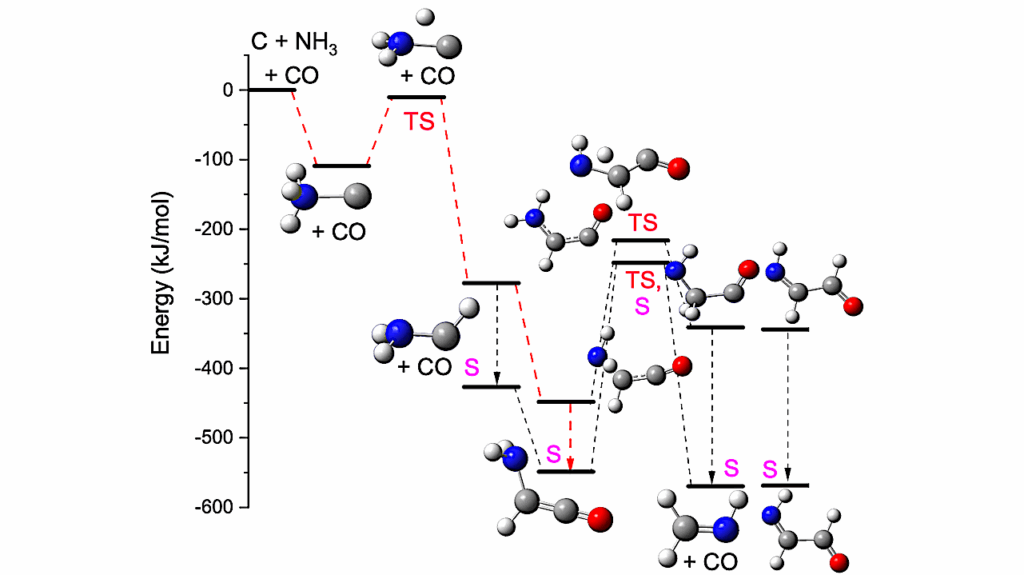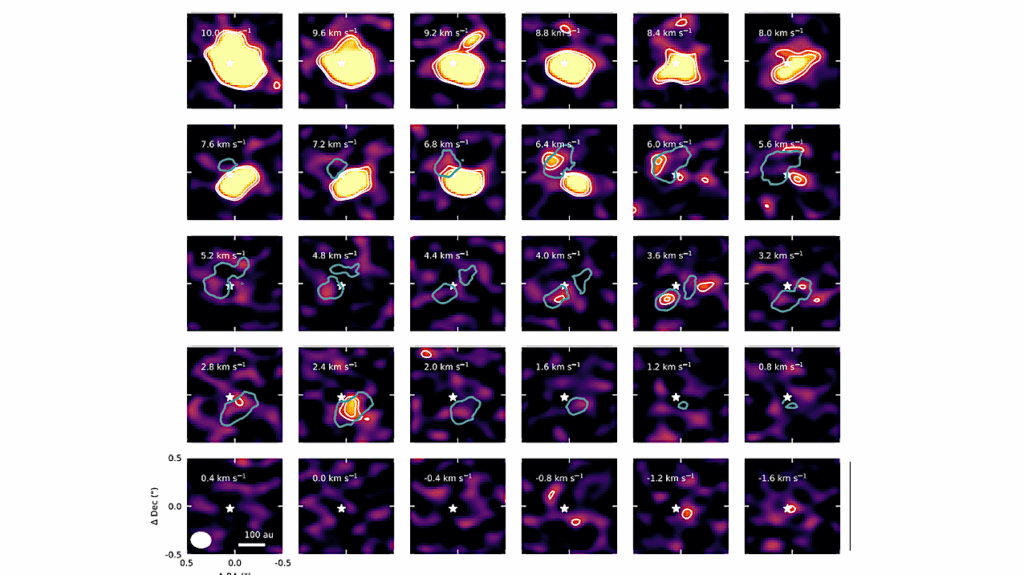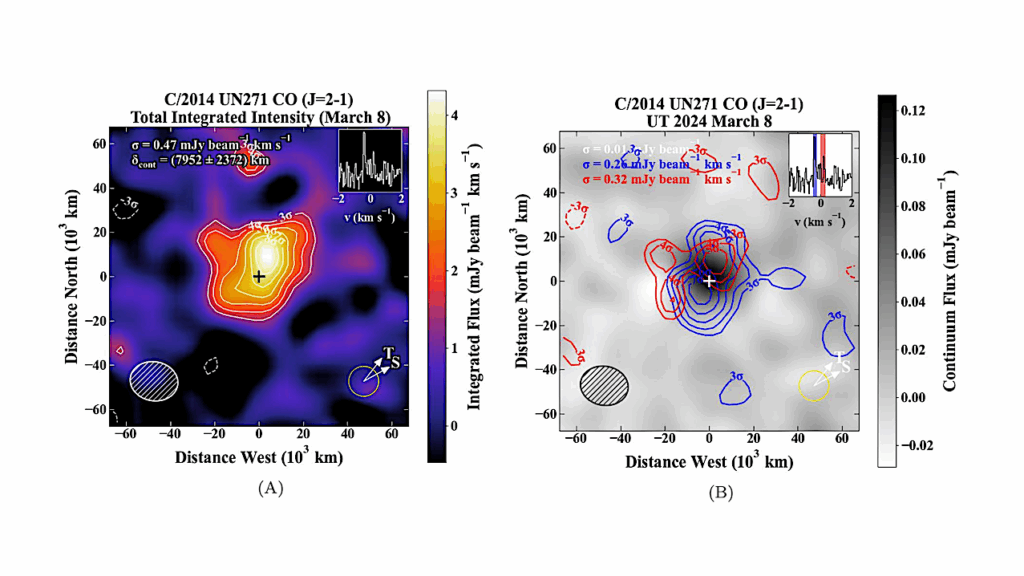JWST Observations of Starbursts: Polycyclic Aromatic Hydrocarbon Emission at the base of the M 82 Galactic Wind
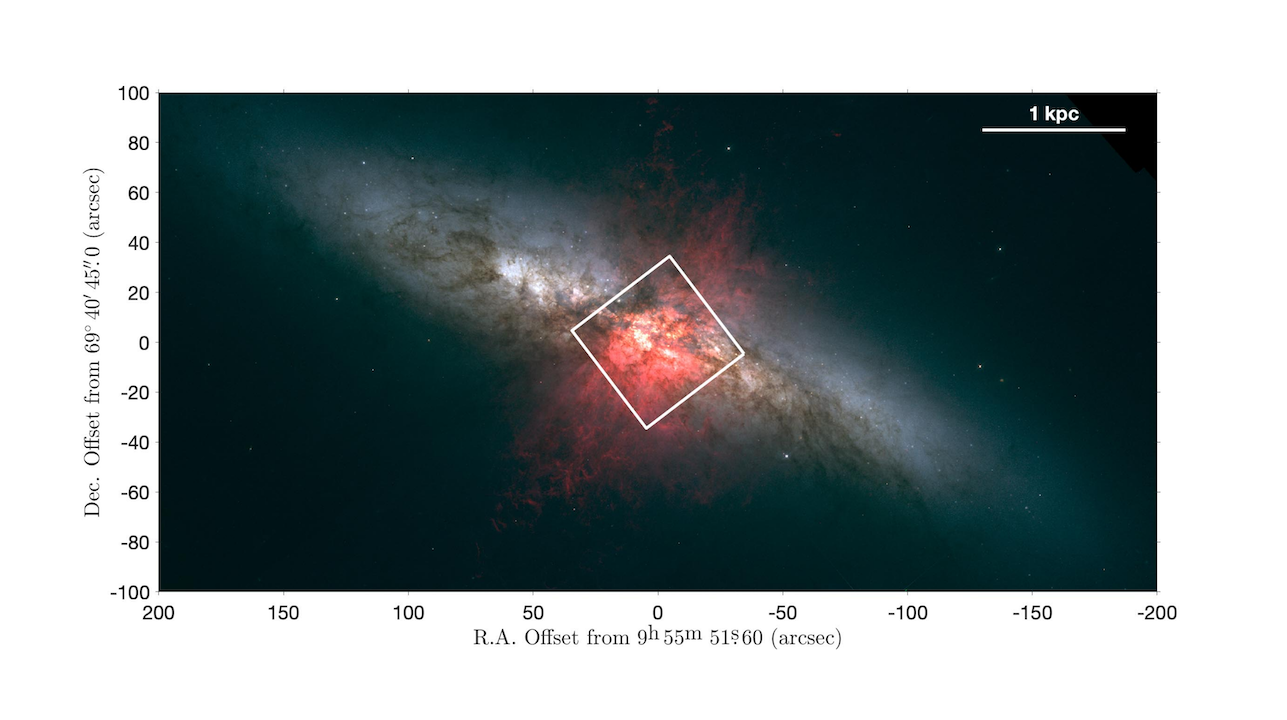
We present new observations of the central 1 kpc of the M 82 starburst obtained with the James Webb Space Telescope (JWST) near-infrared camera (NIRCam) instrument at a resolution ~0.05″-0.1″ (~1-2 pc)
The data comprises images in three mostly continuum filters (F140M, F250M, and F360M), and filters that contain FeII, H2 v=1-0 (F212N), and the 3.3 um PAH feature (F335M).
We find prominent plumes of PAH emission extending outward from the central starburst region, together with a network of complex filamentary substructure and edge-brightened bubble-like features. The structure of the PAH emission closely resembles that of the ionized gas, as revealed in Paschen alpha and free-free radio emission.
We discuss the origin of the structure, and suggest the PAHs are embedded in a combination of neutral, molecular, and photoionized gas.
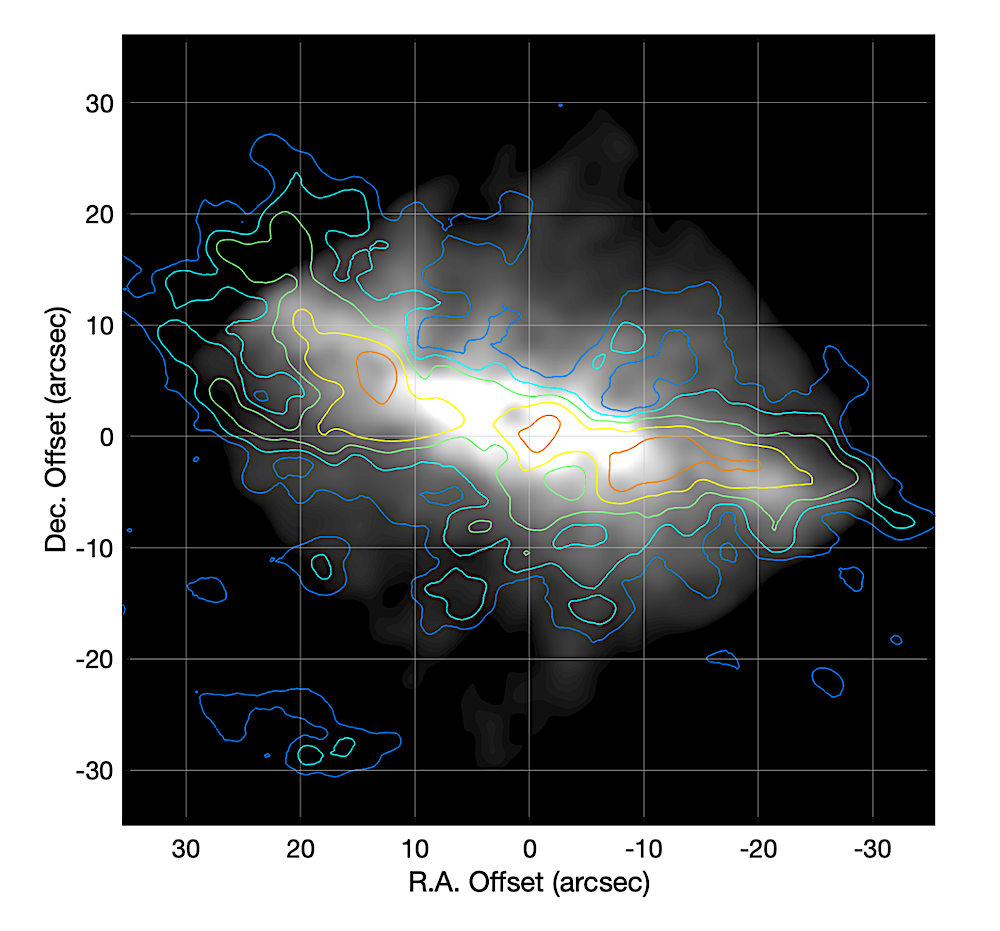
PAH and CO emission compared at the same resolution. The JWST 3.3 µm PAH emission (gray scale) has been convolved to the 1.85′′ resolution of the NOEMA CO, presented here as the integrated intensity map (color contours). The contour values are 190, 320, 550, 930, and 1580 K km s−1 . The lowest contour corresponds to a column density N(H2) ∼ 2 × 1022 cm−2 . Partial correspondence is observed between the base of some of the PAH plumes and extra-planar CO emission. — astro-ph.GA
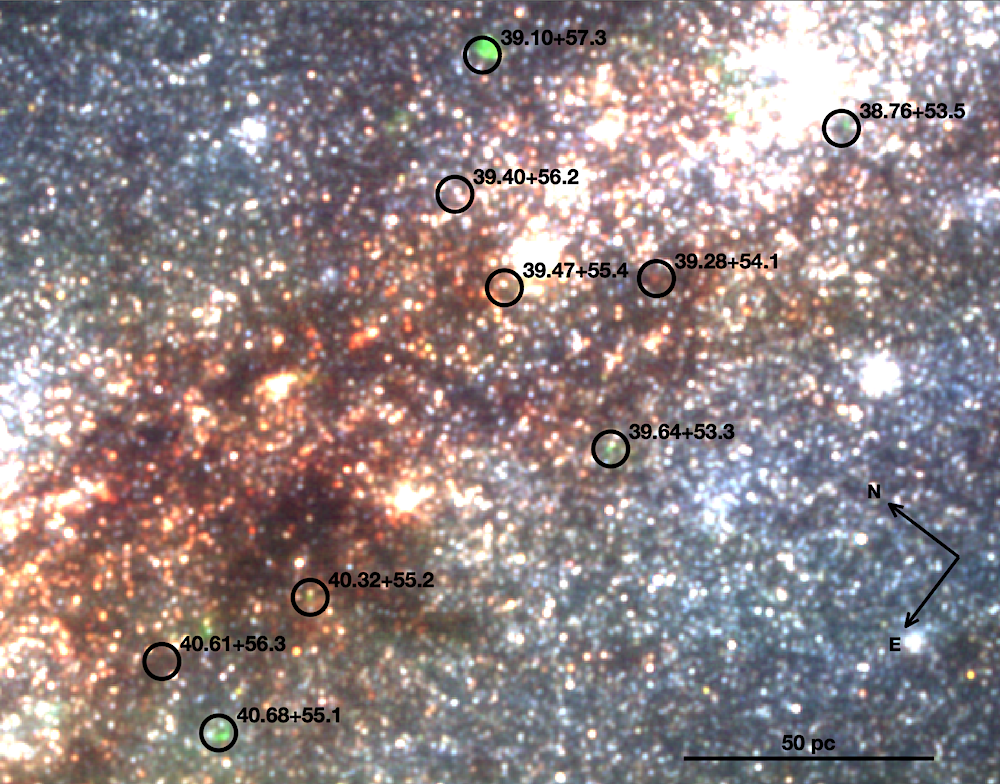
A 11.5″ × 9″ (200 × 160 pc) area near the west corner of the mosaic, with radio SNR positions overlaid (the orientation is the same as Figure 2) The RGB NIRCam mosaic uses the F212N, F164N, and F140M filters for red, green, and blue respectively. The circles (radius 0.2″, or 3.5 pc) and labels correspond to the radio SNRs (Fenech et al. 2010, Table 5). Green regions show an excess of emission at 1.64 µm likely associated with the [Fe II] line due to dust destruction in supernovae shocks. This excess is visible on the radio SNRs 39.10+57.3, 40.68+55.1, 39.64+53.3, 38.76+53.5, and 40.32+55.2, although some regions not associated with known radio SNRs also show a possible F164N excess, perhaps due to local or large-scale shocks. Very red sources are either heavily extinguished at 2 µm or associated with vibrational emission from H2, usually caused by shocks. — astro-ph.GA
Alberto D. Bolatto, Rebecca C. Levy, Elizabeth Tarantino, Martha L. Boyer, Deanne B. Fisher, Adam K. Leroy, Serena A. Cronin, Ralf S. Klessen, J. D. Smith, Dannielle A. Berg, Torsten Boeker, Leindert A. Boogaard, Eve C. Ostriker, Todd A. Thompson, Juergen Ott, Laura Lenkic, Laura A. Lopez, Daniel A. Dale, Sylvain Veilleux, Paul P. van der Werf, Simon C. O. Glover, Karin M. Sandstrom, Evan D. Skillman, John Chisholm, Vicente Villanueva, Divakara Maya, David S. Meyer, Ilse De Looze, Rodrigo Herrera-Camus, Fabian Walter, Monica Relano, Hannah B. Koziol, Joshua Marvin, Maria J. Jimenez-Donaire
Comments: Submitted to The Astrophysical Journal
Subjects: Astrophysics of Galaxies (astro-ph.GA)
Cite as: arXiv:2401.16648 [astro-ph.GA] (or arXiv:2401.16648v1 [astro-ph.GA] for this version)
Submission history
From: Alberto D. Bolatto
[v1] Tue, 30 Jan 2024 00:42:41 UTC (4,134 KB)
https://arxiv.org/abs/2401.16648
Astrobiology, Astrochemistry,


